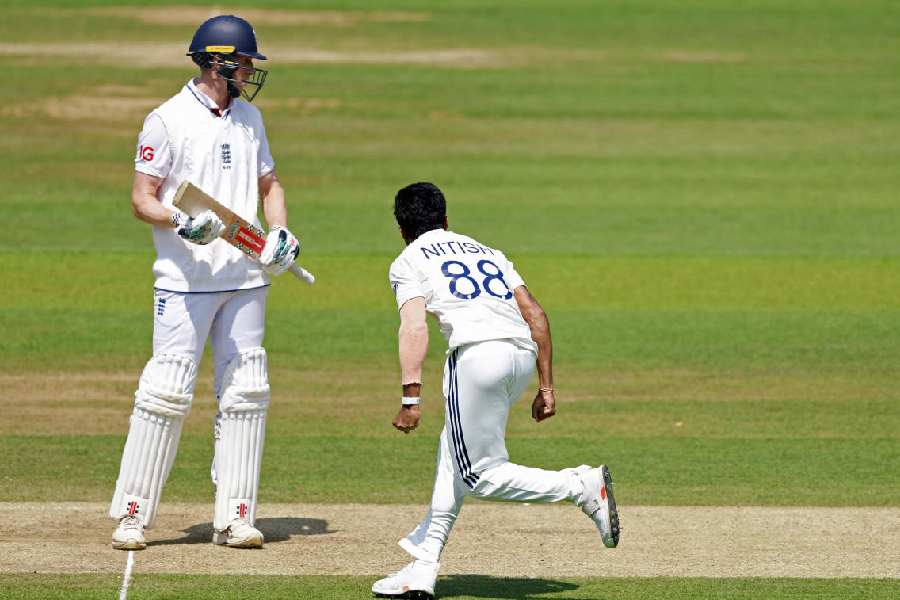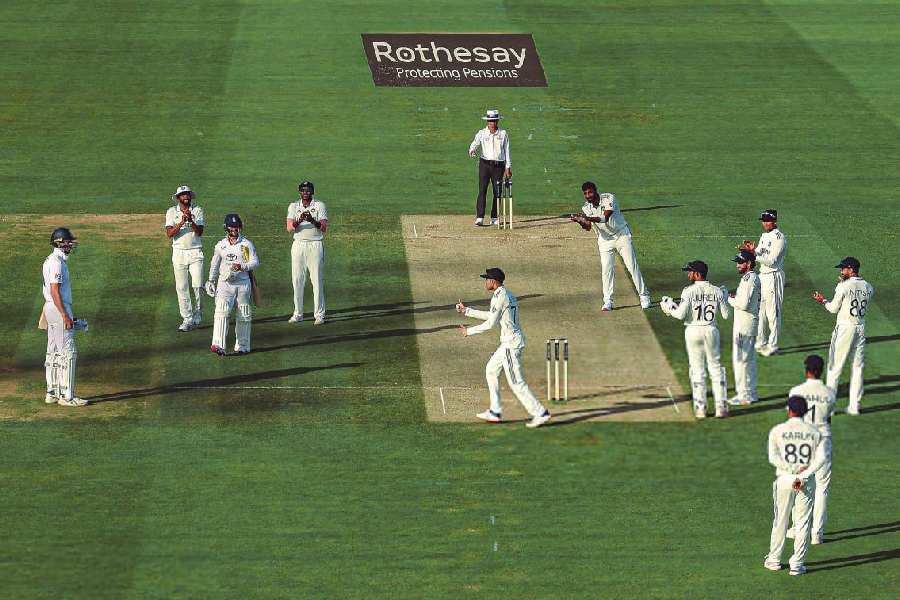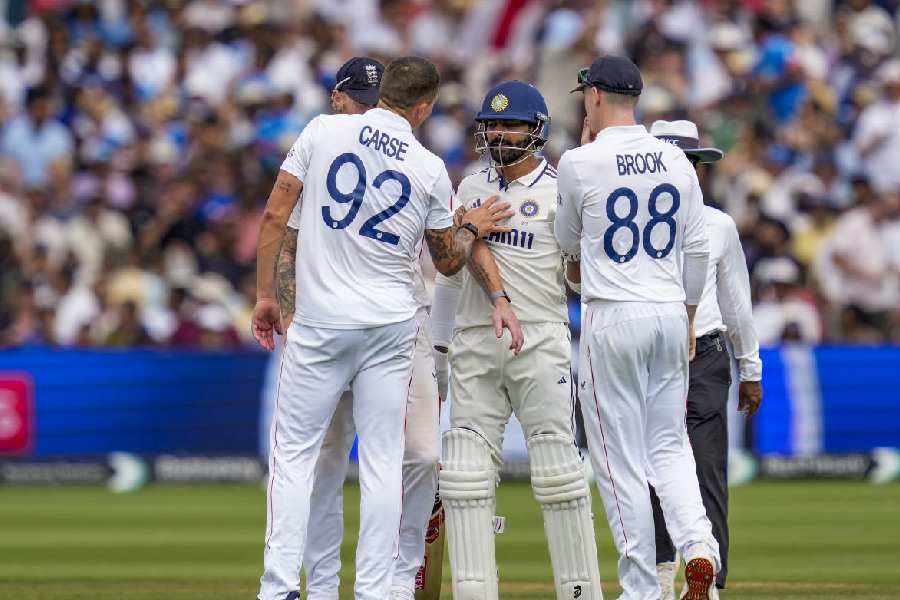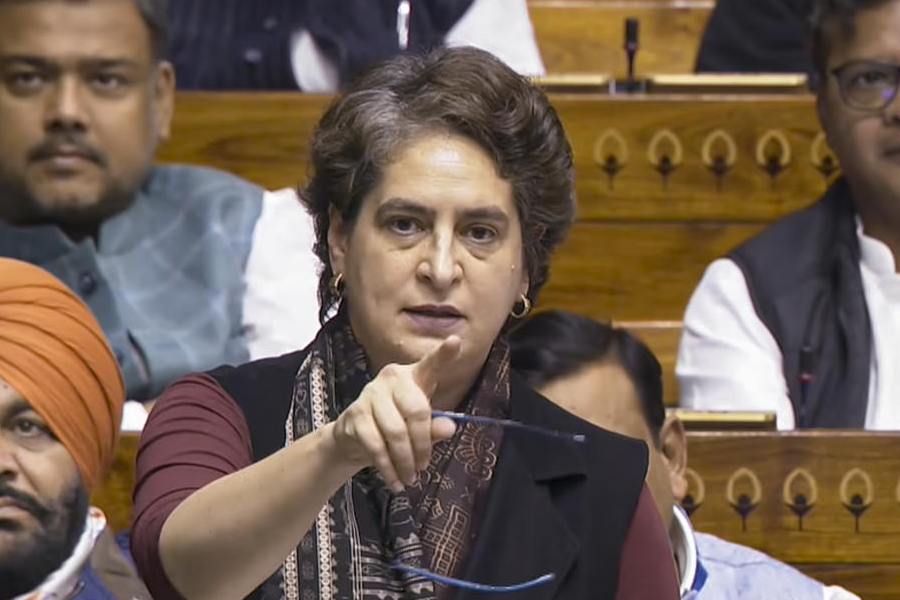Cricket was never a gentleman's game. The sooner the International Cricket Council (ICC) realises it, the better.
The Marylebone Cricket Club (MCC), responsible for establishing and maintaining the Laws of Cricket, though has spelt out how players are expected to behave on the field to uphold the spirit of the game.
“Cricket is a game that owes much of its unique appeal to the fact that it should be played not only within its Laws but also within the Spirit of the Game. Any action which is seen to abuse this spirit causes injury to the game itself,” says the MCC Laws of Cricket.
The recent Lord’s Test has once again triggered the debate over the thin line between what's within "this spirit" and what's outside of it. It was sparked by Mohammed Siraj being fined for his send-off to Ben Duckett on the fourth day.

An animated Nitish Kumar Reddy celebrates after dismissing Zak Crawley at Lord’s. Reuters
The intensity of the occasion led to plenty of spice and niggle as tempers flared from the moment the two teams ended on a par at the end of the first innings. It didn’t take much of an effort to spark the flames once Shubman Gill decided to give Zak Crawley a mouthful for his “deliberate” time-wasting tactics late on the third evening.
But not all agreed with the ICC match referee’s decision to fine Siraj. Stuart Broad found it “ridiculous”.
“Siraj got 15 per cent fined for his altercation with Duckett which I thought was ridiculous… He didn’t do anything particularly wrong apart from celebrating a huge wicket that got his team back into the game,” Broad said on ‘For The Love Of Cricket’ podcast with Jos Buttler.
Broad had tweeted on the issue as well, saying, “Find this ridiculous. Siraj 15% for aggressive celebration. Gill swears live on tv & carries on and what? It’s either both or neither. Players aren’t and shouldn’t be robots but consistency is key.”
Such acts of rivalry and intent are considered commonplace in today’s professional world. It adds to the drama and fervour while maintaining the lively nature, which draws spectators to the stadium.
If Test matches are to stay alive in the days of T20 franchise cricket, such cut-throat aggression often stokes the excitement and motivates the players to perform better.
“... wouldn’t spectators rather see players caring too much, rather than too little about playing Test cricket; caring too much, rather than too little, about playing for their country?” wrote Mike Atherton in his report for The Times, London.
“No one, of course, wants to see physical altercations on the field of play, or sustained nasty verbal abuse... But there was none of that here, just two teams full of passionate intensity, commitment and skill. What a Test match they gave us.”

The Indian players confronting the alleged time-wasting tactics of Zak Crawley (extreme left) in the closing stages of play on Day III at Lord’s. The incident added to the intensity of the contest between the two teams. Picture shared on X
Tempers flared when Brydon Carse and Ravindra Jadeja collided mid-pitch in the closing moments of a theatrical finish to the Test, but that was never intentional. Both players had their eyes on the ball and the collision was accidental.
It would be insane to compare it with Virat Kohli’s shoulder barge to Sam Konstas during the last Boxing Day Test in Melbourne.
At Lord’s, players excelled in their show of aggression and motivation as the crowd cheered every moment of the contest. It was the hunger to perform that infused a
combative nature among the players.
Would it have the same effect on the crowd if there were 22 gentlemen cricketers moving around without any sign of emotion and belligerence?
The Indians might have started it all with clapping and gesturing towards Crawley but the drama certainly was well received and appreciated. KL Rahul did say later that he empathised with what Crawley did on the third evening — running the
clock down to play as few balls as possible when India tried to get in an extra over before the close.
Such acts of rivalry will always draw applause unless it is aimed at any physical abuse. The ICC needs to realise the changing dynamics of the game before wielding the axe. The match referee shouldn’t resemble a principal trying to discipline school children.
As Broad says, the players aren’t “robots”. The match referee needs to show restraint and make judgment on a broader perspective consistently and, if needed, come out of the ICC manual.

England’s Brydon Carse and India’s Ravindra Jadeja during an altercation after the two collided on the pitch during the fifth day’s play at Lord’s PTI
The ceasefire of hostilities will end in four days as the fourth Test begins in Manchester. The goal of the match referee should be to maintain fair play and uphold integrity without being too harsh on the players.
That will raise the level of the game while attracting more crowd involvement. Test cricket will thrive in such measured hostility.










